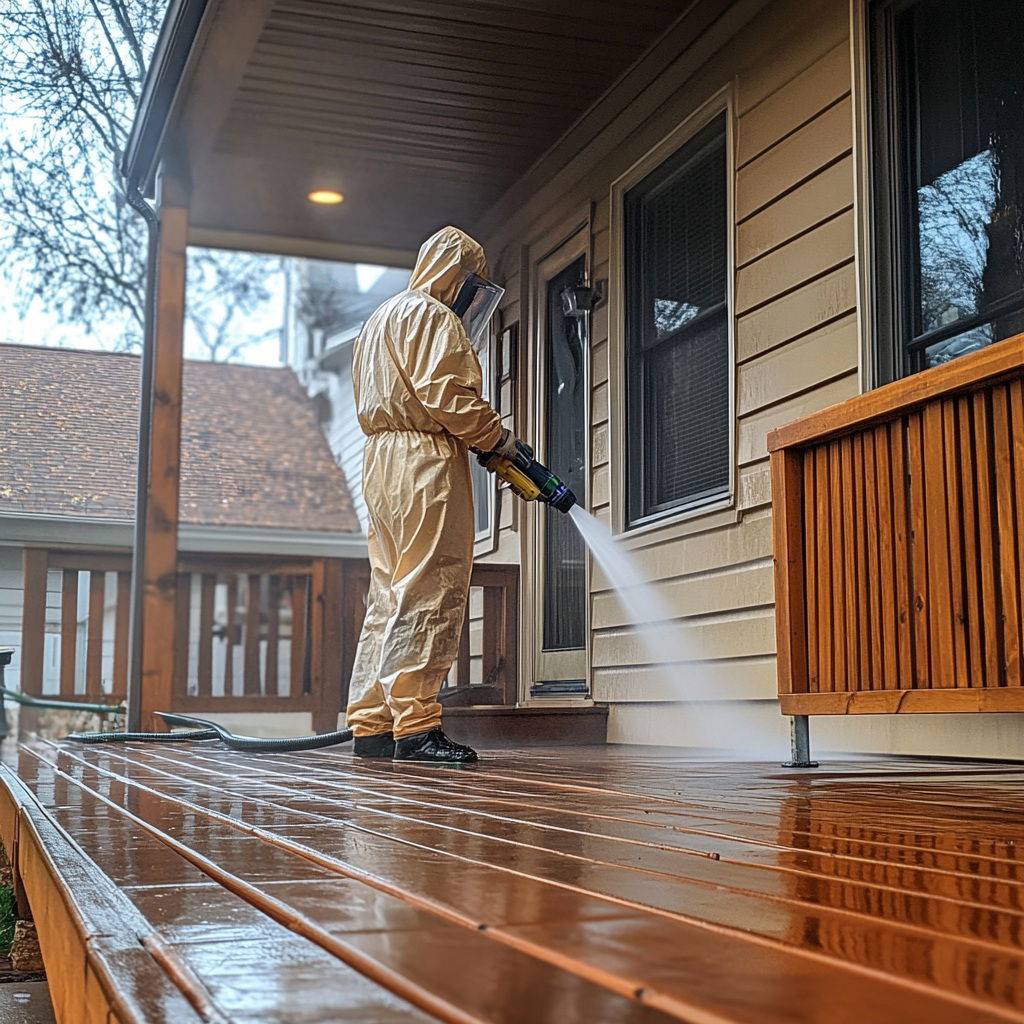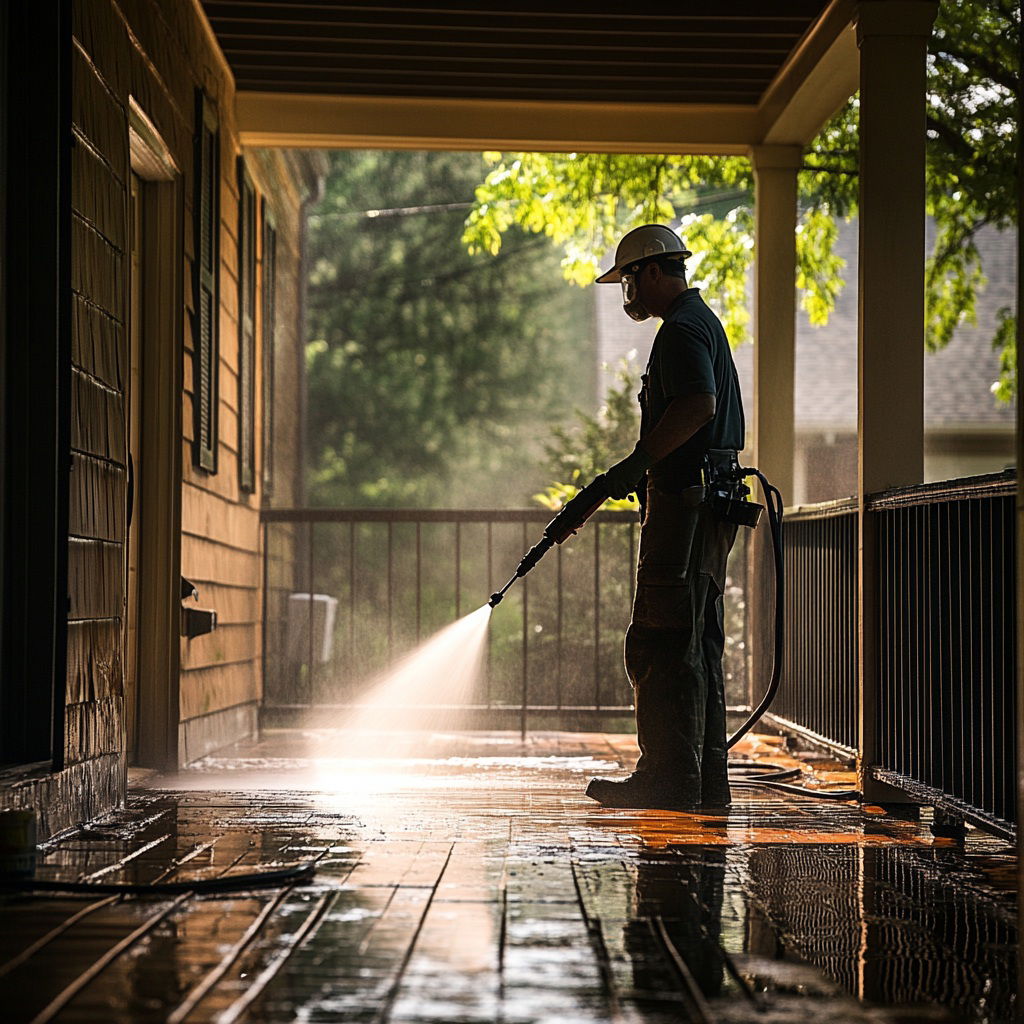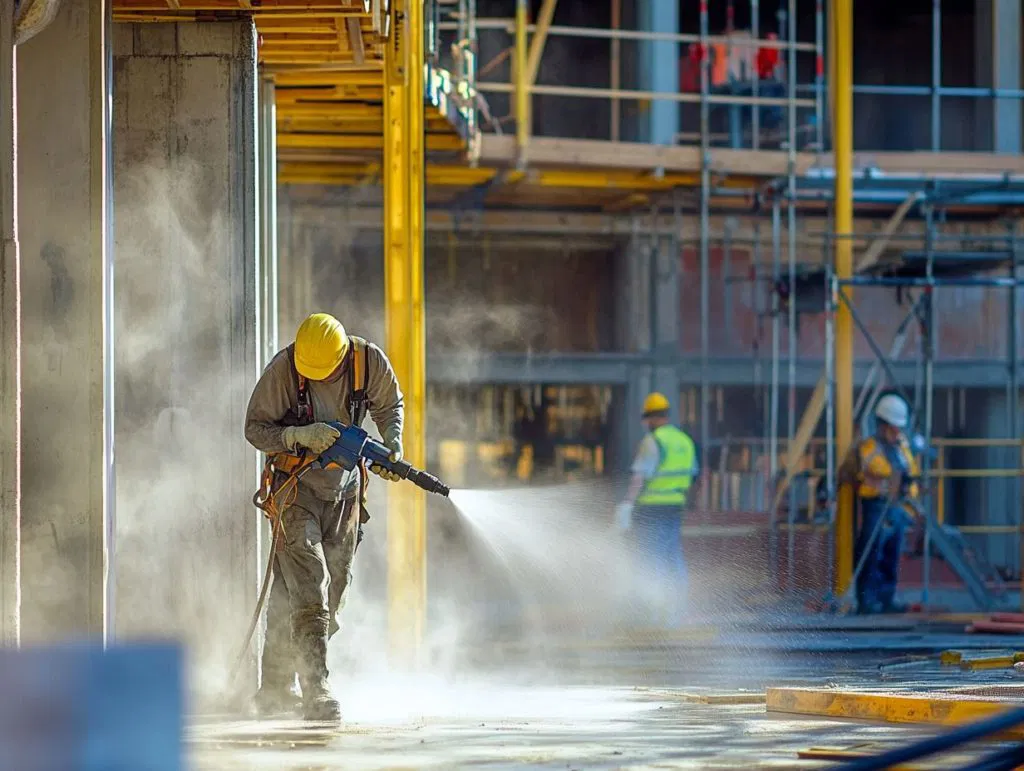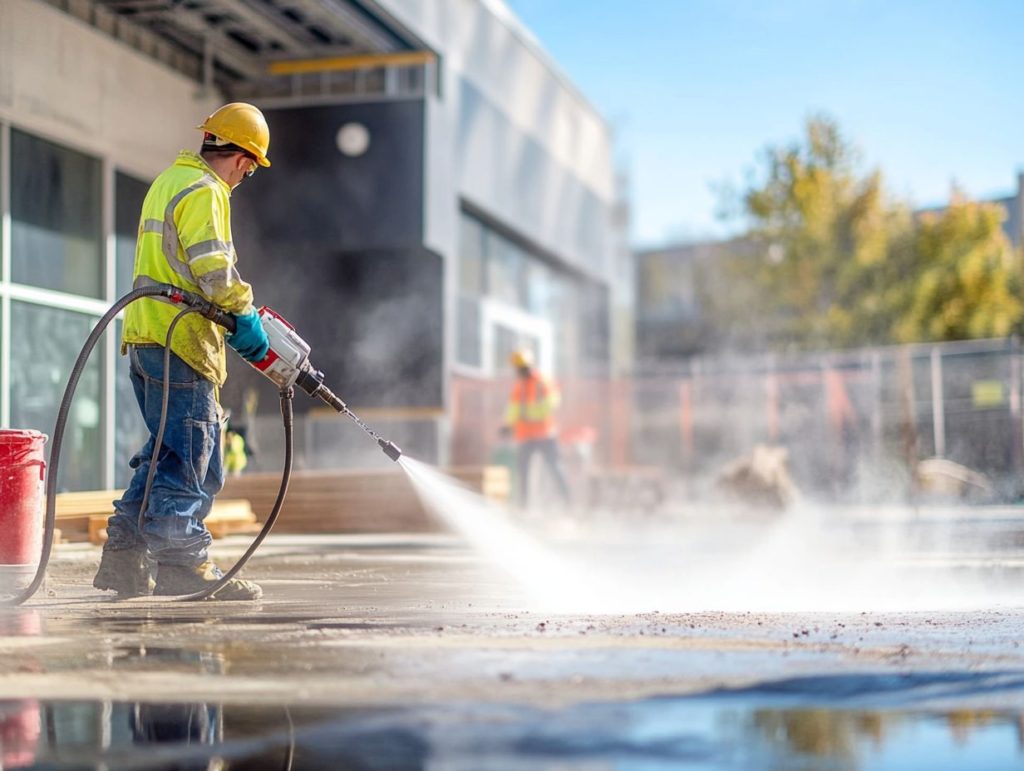Can You Clean Wooden Patios And Verandas With Pressure Washing?
Yes, you absolutely can clean wooden patios and verandas with pressure washing, and it’s a highly effective way to do so. Wooden surfaces often accumulate dirt, grime, and mildew over time, especially in areas with high humidity or frequent rain. While it might seem like pressure washing could damage the wood, the truth is, when done properly, it’s a safe and straightforward method to bring your patio or veranda back to life. You just need to make sure you use the right pressure settings and techniques to avoid harming the wood’s surface. It’s about knowing how to balance water pressure and distance to get that wood looking fresh again. Let’s discuss why this deep cleaning method is practical and safe for outdoor wooden spaces.

Why Deep-Clean Your Wooden Veranda or Patio at Least Once a Year
Deep cleaning your wooden patio or veranda annually is an excellent habit. Outdoor wooden surfaces are constantly exposed to the elements—rain, snow, sun, and even falling leaves. Over time, these surfaces absorb moisture, leading to mold, algae, and mildew growth. The UV rays from the sun also cause wood to age prematurely, making it look faded or grey. Dirt and dust can build up in the wood grain, causing it to lose its natural luster. While sweeping and occasional rinsing can help, they’re not enough to remove deeper stains or growths that embed themselves into the wood.
A once-a-year deep clean is perfect for tackling the grime that regular cleaning can’t touch. The best time for this deep clean is usually in the spring, right after winter. Cold and damp weather can accelerate mold and mildew growth, so early spring is the ideal window to clear it out before summer begins. That way, you’re all set to enjoy the outdoor space without worrying about slippery surfaces or unsightly grime.
Spring cleaning also has another bonus: preparing your wood for possible resealing. Pressure washing can strip away the old sealer, allowing you to reapply a fresh coat to protect the wood for the next year. This added layer of protection is essential if you want to extend the life of your wooden patio or veranda, as it blocks moisture and harmful UV rays from penetrating the wood.

Why Pressure Washing is Safe and Easy
Contrary to some myths, if you do it right, pressure washing is not too harsh for wooden surfaces. Wooden patios and verandas might seem delicate, but pressure washing can be a gentle yet thorough cleaning solution. Many homeowners are surprised by how effectively it removes years of built-up dirt, stains, and mildew without causing any damage.
The key to safely pressure washing wood lies in controlling the water pressure. Higher pressure can indeed gouge, or splinter wood, but moderate pressure does wonders. With a bit of distance and the right nozzle, the pressurized water can clean out dirt from the grain and remove grime you can’t scrub away by hand. It’s a lot less labor-intensive than scrubbing with a brush, and it also does a better job of getting into all the nooks and crannies of your wood.
What’s great about pressure washing is how much time it saves. A job that could take hours by hand can be done in under 30 minutes, depending on the size of your patio or veranda. It’s also environmentally friendly. You’re using water, with no need for harmful chemical cleaners to get a deep clean. This method ticks all the boxes for those who like efficiency and simplicity.
As long as you follow the correct procedures, pressure washing is an easy and safe method to restore the beauty of your wooden outdoor areas. It’s all about knowing the technical specifications to prevent damage while achieving maximum cleanliness.
Technical Specifications for Pressure Washing Wooden Surfaces
The technical side of pressure washing is where things get interesting—and where you can avoid costly mistakes. Pressure washers can vary greatly in strength, from as low as 1300 PSI (pounds per square inch) to well over 4000 PSI. When it comes to wooden patios and verandas, you want to stay within an effective yet gentle range.
The sweet spot for cleaning wood is between 500 and 2,500 PSI, depending on the type of wood and how tough the grime is. Softwoods like cedar or pine should stay closer to the lower end, around 500-800 PSI, while hardwoods like oak can handle pressures closer to 1200-1500 PSI. However, never exceed 2,500 PSI—anything beyond that can damage your wood, causing splinters or gouging.
It’s also important to choose the correct nozzle. Pressure washers come with various nozzle attachments, usually color-coded to indicate the spray angle. For wooden surfaces, you’ll want to use a 25-degree (green) or 40-degree (white) nozzle. These are considered “wide spray” nozzles, which distribute the water pressure over a larger surface area, preventing concentrated pressure that could damage the wood. Avoid using a 0-degree nozzle at all costs—it creates a pinpoint stream that’s too intense for any wood surface.
Equally essential is maintaining the right distance between the nozzle and the wood. Ideally, you should hold the pressure washer’s nozzle about 12 to 18 inches away from the surface. If you hold it too close, you risk damaging the wood with excessive force. The goal is to find that balance between effectively removing dirt and grime and putting too much strain on the wood.
Temperature matters, too. Pressure washers often come with a setting for hot or cold water. While cold water works fine for most jobs, hot water can be useful for tackling oil stains or stubborn mildew. However, be cautious about using hot water on certain types of wood, as it can sometimes raise the grain or even warp softer wood types. Cold water is usually your best bet for regular cleaning.
Lastly, you should consider using a mild detergent specifically designed for wood. Pressure washing with water alone will remove most surface-level dirt and mildew, but adding a cleaning solution can break down deeper grime. Make sure to rinse thoroughly to avoid leaving any residue behind, which could cause the wood to become slippery or even attract dirt more quickly.
Final Thoughts: Pressure Washing the Safe Way
Pressure washing is a fantastic option if you want to breathe new life into your wooden patio or veranda. It saves you time and ensures a thorough, deep clean that’s hard to achieve with traditional scrubbing methods. If you adjust the pressure, use the right nozzle, and maintain the proper distance, your wood will stay safe while getting a much-needed refresh.
One annual deep clean will keep your wood looking its best for years, especially if you plan to reseal it afterward. With pressure washing, you can tackle the grime without breaking a sweat—and enjoy your outdoor space looking fresh and inviting

